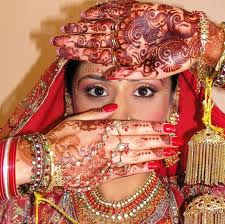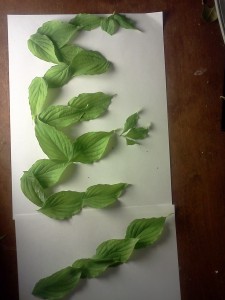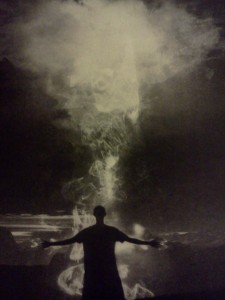My Reflections/ Introductory Essay to My Portfolio
ø
Course description: “course surveys the literary and artistic dimensions of the devotional life of the world’s Muslim communities, focusing on the role of literature and the arts (poetry, music, architecture, calligraphy, etc.) as expressions of piety and socio-political critique.” CB 12: For the Love of God and the Prophet
The choice to enroll in this class was one out of my comfort zone for two reasons: First, I had very little understanding of Islam. And secondly, as far as I know myself, I was not at all confident about my artistic abilities.
A little bit about myself: I’m originally from a small town in Kenya. Kenya has a significant Muslim population, most of who reside at the Coast. Figure 1, shows a mosque in Nairobi (Jamia Mosque). Approximately 4.3 million, or 11.2% of the Kenyan population profess Islam, in a predominantly Christian nation1. First Muslims arrived at the Coast as traders around the 8th century. Over the centuries, Islam failed to spread to the interior, and largely remained a coastal phenomenon. I grew up in a Christian household. Growing up, I was always intrigued by the cordial relationship that existed between Christians and Muslims in Kenya; unlike the case of here in the US. I did gain an understanding of sharia law from the debates on its constitutionality; it is anchored in our constitution (In 1967, Kadhis’ Courts Act established six Kadhis’ Courts for the application of Muslim personal status law). Islamic law is applied by Kadhis’ Courts where “all the parties profess the Muslim religion” in suits relating to “questions of Muslim law relating to personal status, marriage, divorce or inheritance2. When it came to discussing Islamic art, body art (henna) is what came first to my mind. I have encountered a lot of Kenyan Muslim women with henna, especially during celebrations like weddings. A lady cousin of mine was married off at the Coast, and she had henna on at the wedding. Figure 2 shows a woman with henna. It’s just breathtaking. From research I gathered that, henna is a cosmetic and a medicine, but most importantly, it is a marker of beauty, auspiciousness and celebration. Henna painting is considered a woman’s art form, often to mark special events in a woman’s life, especially marriage3
[Figure 1 (top) –Jamia Mosque in Nairobi, Kenya; Figure 2 (bottom)- woman with henna on her hands]
If there’s one thing I learnt from this class; it is that art is an intricate part of Islamic life, both at the aesthetic and devotional level. Islamic art tradition embodies the words of God and Muhammad as a living presence through “epigraphy [inscriptions on religious building, objects], calligraphy and illumination, and the creation of a range of related objects of practical as well as ritual and symbolic significance”4. My portfolio of creative responses was a personal journey, through which I explored various themes within Islam. I used art as a lens to study Islam. The descriptions on each of the responses reflect my understanding of the themes. Through different media such as multimedia, poetry, drawing etc, I do explore the following themes –Submission, Divine Love, islam vs Islam, Pillars of Islam, Sufism and so forth. Let me take through my portfolio.
Poetry as an art form is a critical foundation of Islam. Three of my creative projects involve poetry as media to explore the above themes. On my first piece, I show a public figure (poet) standing on a pedestal (higher ground) facing the skies. The person represents a poet in pre-Islamic times in the Arabic societies. Poets were considered divine. Poets were seen as connected to spirits. This drawing was meant to highlight the role of poetry during those times; and how it became central to Islamic expression. My inspiration was a discussion we had in section. I remember this intriguing phrase from the TF (Oludamini) –“Poets could literally destroy Kingdoms”. On this piece, I explore the power of poetry as an art form in pre-Islamic/Arabic societies. This poetic culture was preserved in the Islamic era. The poems then did illuminate about the life during the early years of Islam.
“A Prayer to Allah” is another poetic piece. In this 5-couplet prayerful poem, I touch on: “Pillars of Islam” (Shahadah– professing Muhammad as God’s messenger, Zakat -practice of charitable giving by Muslims), “Divine Love” (Ishq), “Monotheism”(-belief in only one God, Allah). This piece is a ghazal. My other creative response “Nightingale, the Lover”, is based on a poetic masterpiece, “Conference of the Birds” by Attar. Attar poetically tells the story of a group of birds, under the leadership of one of the birds (“hoopoe”), on a journey towards the land of “simorgh” (God)5. My piece is a drawing of an “immobile” Nightingale, one of the birds in Attar’s book, as it struggles with the attachment towards worldly love/attraction. The “shackles” (worldly love) limits the Nightingale from getting to Simorgh (realizing the true nature of God). Poetry was used to explore various aspects of Sufi tradition. That’s how poetry is significant.
If art is that important to Islam, then can it be interpreted the same way by muslims and non-muslims as well as across different times and cultures? On the response “Debates on Islamic Art”, I present two schools of thought on this debate offered by Seyyed Hossein Nasr (Islamic Art and Spirituality) and Gulru Necipoglu (The Topkapi Scroll). On my response, I show a clip of crescents; a crescent is considered not only an important symbol of Islamic faith, but also a historical symbol in the Ottoman empire. In short, Nasr argued that Islamic art were timeless forms with a mystical dimension. A certain level of spirituality and devotion was required to get to the inner meaning. Necipoglu, on the other hand, argues that Islamic art should into account the time periods and cultures at that time they were created.
Finally, I wanted to get to back to the central theme of this class: Understanding Islam. Prof. Asani referred to this concept- “cultural-studies approach” – gaining understanding of Islam by studying the literature and arts of Islamic communities; understanding how they view Islam and its meaning to them. My last two pieces are on Islam and how it’s understood in two different cultures; US (Western world) and Senegal (based on Aminata Sow Fall’s novel, “The Beggar’s Strike”).
On the piece “(Mis)Conceptions of Islam”, I look at how Islam is perceived in the Western world. This was especially important on the backdrop of the 9/11 tragedy. For this piece, I asked people what came first to their mind when they heard “Islam”. The responses were posted randomly on a board. On this creative project, I wanted to clarify and highlight some of the key tenets of Islam, and especially define “Islam and islam” –islam being “submission to God” while Islam is the name of the religion. One important concept I need to mention here –tafsir/ta’wil –commentary or interpretation of the Qu’ran. Interpretation of the Qur’an is becoming a big issue today as more and more people have become literate, but don’t have the necessary background in history to fully understand the text, and therefore interpret certain passages too literary. For this reason, there is a rise in fundamentalism and people like Osama bin Laden, who did not receive a proper education in Qur’an interpretation, draw meaning from the Qur’an that is not necessarily there.
Aminata Sow Fall’s “The Beggar’s Strike” highlights conflicts within the intersection of Islamic institutions and beliefs and the different spheres of life –politics, marriage & family etc, of the Senegalese people. On the final piece, I look at Islam in Senegal, and how piety is viewed from a religious and cultural context. The piece is a picture of a beggar, with a placard written “DONATONS 4 PRAYERS”. In the Senegalese society, the rich people give charity as a form of sacrifice to the beggars in exchange for prayers and wishes for long life, prosperity and pilgrimages from the beggars. At a beggars’ protest; “And no more prayers for their welfare till we’ve received a good fat donation!”6. This form of sacrifice is considered “pious”. What is even more interesting, is that the existence of the poor and the rich, with their respective “roles” is justified from a religious and cultural perspective.
Enjoy the pieces of art!
Thank you.
Lawrence Barchok
1 Kenya 2009 Census
2 http://www.law.emory.edu/ifl/legal/kenya.htm
3 American Museum of Natural History http://www.amnh.org/exhibitions/bodyart/glossary.html#henna
4 Renard, John : “Seven Doors to Islam: Spirituality and the Religious life of Muslims”
5 Attar, Farid. “Conference of the Birds”
6 Aminata Sow Fall. “The Beggar’s Strike” (pg23)







